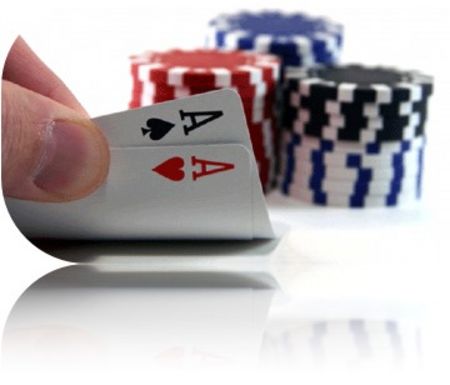Rainbow of All Rags

Strategies for a rainbow flop of all rags are similar to those when the flop includes a
high card, but low to medium pairs are always more vulnerable to overcards.
Straight draws are also more common, especially against opponents from the
blinds. Since there is not a high card on the flop to scare your opponents, many will
play overcard draws. In addition, your hand could already be losing against an
opponent holding a medium high overpair such as 99 or 88.
When you hold a small fop pair, important considerations in determining strategy
include:
-
The number of opponents: You should almost always play your hand strongly
against one or two opponents by either betting out or raising. When there are
several opponents in the hand and you feel you have the best hand, choose
the strategy that has the best chance of driving out your opponents such as a
check-raise.
- The size of the pot: Against several opponents in a raised pot, top pairs are
rather weak with an all rag flop since you could already be beat by an
overpair and it is nearly impossible to get many opponents to fold their
overcard draws. When the pot is large, you actually might play top pair as a
draw to five outs.
- Your kicker card: A high kicker card can add some value to your hand by
giving you a stronger draw or by counterfeiting your opponent's overcard.
Let's look at a couple of examples where you flop a low top pair. One common
situation is when you get a tree play out of the blinds. For example, you hold 9 ♣ 7 ♥
with a 7 ♦ 4 ♥ 3 ♣ flop. Against one or two opponents, you should almost always bet
out. Checking is risky since you do not want to give free cards. Against three
opponents, you are usually in a borderline situation where you might bet out or
check with the option of folding, calling, or raising should someone bet. Tend to bet
out in a tight game and check in a loose game. Also tend to bet out more if your
kicker is high. Sometimes checking and calling is correct when you don't feel your
hand is currently best out you are getting sufficient pot odds to draw.
Against four or more opponents, you might check and then determine your best
strategy based on the action behind you. If a late opponent bets, you could check-
raise to try and drive out the other players. If several opponents play the flop or
there is a raise, consider folding or possibly calling if you are getting decent pot
odds on a draw.
Another common situation is when you are in late position and play a hand such as
A7s or 98s against several players. In these situations, you at least get to see what
your opponents do before you have to act. If it is checked to you, almost always bet
out. All of your opponents have indicated weakness, so you probably have the best
hand unless an opponent is going to check-raise out of the blinds.
NEXT...Two-Suited

